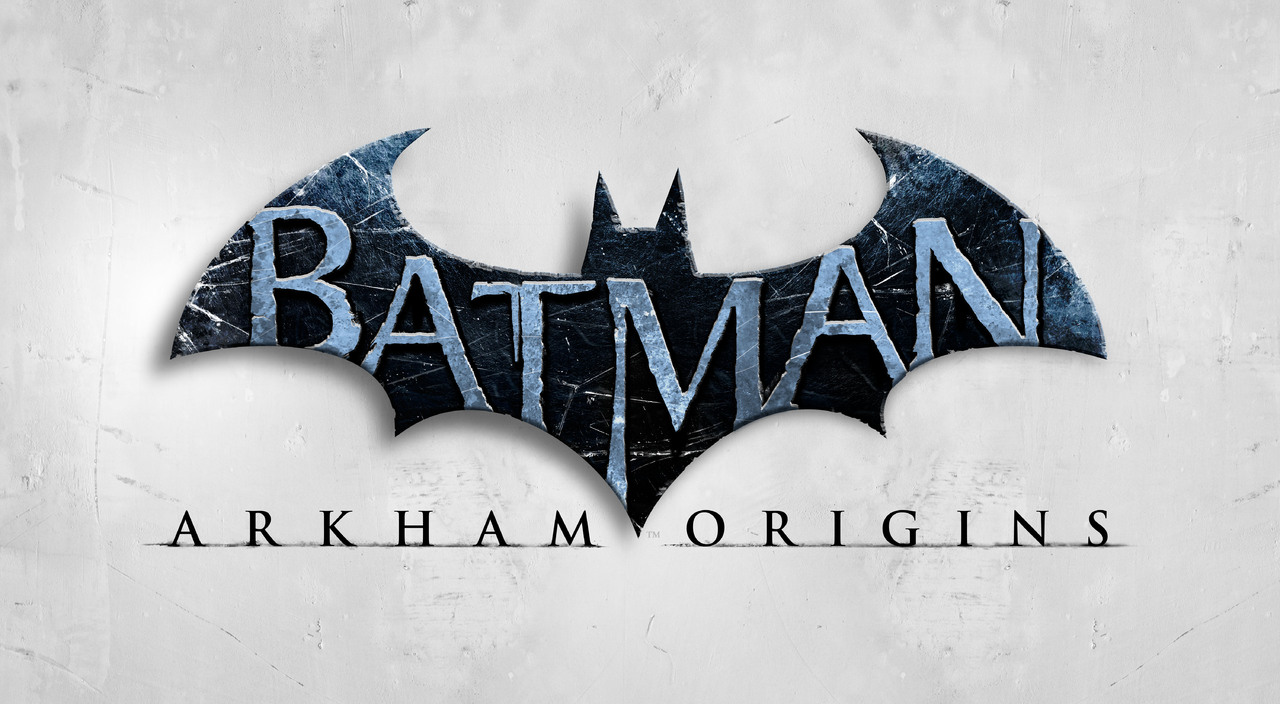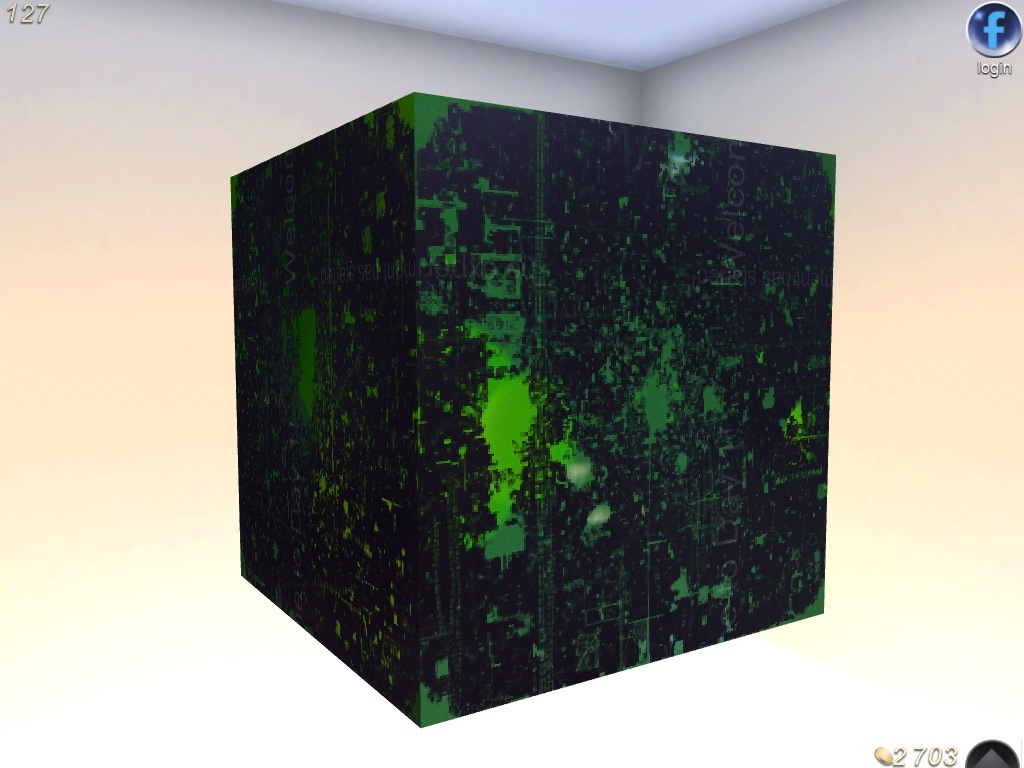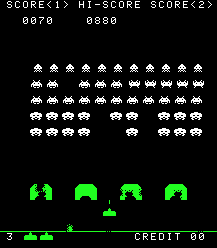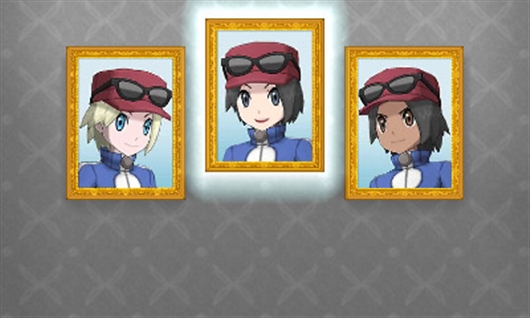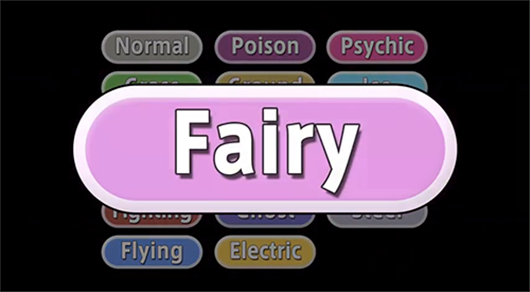Monday, October 28, 2013
Batman: Arkham Origins Review
Batman Arkham Origins is the third installment to the Batman Arkham series. The game delivers hours worth of fighting criminals, solving mysteries, and a city to explore. It has an enriching story with greatly interactive gameplay. Although, there are some frustrations in the game such as indirect waypoints in some areas, bad respawns, or bad checkpoints.
The story is a prequel to the past two games. Batman is just a myth to the city. The game opens on Christmas Eve with news describing a prison break led by a infamous criminal known as Black Mask. Batman, of course, goes out to save the day. Black Mask hired 8 assassins to take out Batman. Each of them have their own special abilities and fighting styles. Killer Croc, Deathstroke, Bane, Copperhead, Deadshot, Shiva, Firefly, and Electrocutioner all compete for a bounty of $50,000,000 to kill off Batman, luring him by causing mayhem throughout the city. Batman decides to find Black Mask to end it all, but on his mission he meets many new challenges, mysteries, and enemies to face.
The gameplay is another button masher with occasional quick time events. Although this seems dull, the fighting is really fluent, the counters are precise, and the fighting just looks and feels realistic. The boss battle against Deathstroke was an example of amazing game animations. Both the player and Deathstroke can attack, block, and counter with different moves each time. It closely similar compared to an action movie. The fight became harder as it goes on bringing new surprises to the battle causing the player to react differently every moment.
As stated before, there are a few imperfections with the game. At some moments, players may find themselves dying and being respawned across the city from the current objective. This can be frustrating after a couple attempts to complete the mission. Also, the level design can make players look around for something as simple as a door that was hidden around a corner they couldn't see and will cause the player to search for hours to find out the exit was just in a spot they passed multiple times. There are also some missions that can will be activated when you enter a certain area that are literally impossible to complete at the location you start at. Fortunately if you fail, the game will respawn the player closer and it will be easier to start again.
The game is very interactive with the player. There are many puzzles that can be solved in many different ways. It can range from hacking a radio signal, to throwing a Batarang at a button. Enigma is one of the main sources of these puzzles and adds much more enjoyable game mechanics. There are also interactive crime scenes that the player must locate and analyze each part of the scene to figure out what had happened. Batman gives off some commentary to explain to the players what events took place to leave the scene the way it is, so there isn't much thinking needed to be done from the player. It is rather an interactive cut scene.
Players can upgrade their equipment or learn new abilities with points they gain from leveling up. There aren't many choices of upgrades at the beginning of the game but they can alter your gameplay slightly. You gain levels from completing mission and defeating enemies in combat. You gain more experience from defeating an enemy stealthily or with a high combo.
Batman Arkham Origins is a fun, interactive game that make players think logically, strategically, and creatively, whether it is to take down targets or complete a puzzle. With very few weak points, this game has a strong design that plays great and looks beautiful. It is a game that all gamers should play and all Batman fans should appreciate.
Sunday, October 27, 2013
Dark Souls 2 Beta Failure
Unfortunately due to server issues, the Dark Souls 2 beta did not launch for North and South America at the time specified. The developers worked hard at keeping fans informed on the state of the server but could not fully fix the problem. Although the beta testers could not log into this beta, they have a secured spot to participate in the next beta test. The beta was a "server load test using massive simultaneous logins from all areas," so it was expected to have these problems. There is no set date for the rescheduling, but Namco will release that information sometime this week.
Tuesday, October 15, 2013
Playing By the Rules
by: Zippynom
“I'm jumping on the bed!” Exclaims my sister, while she makes Link duck up and down on a bed. I can barely constrain myself from telling her that she's supposed to be going up Death Mountain to save the Gorons from all the monsters. She insists, instead of following the plot, on hanging out in Lon Lon Ranch doing pretty much nothing. Between gritting my teeth and trying to hint her where she is supposed to go I realize she isn't playing the game wrong, but playing it the best way a game can be played: Her way. She's participating in a world that functions understandably and having her own kind of fun.
Games often do their best to constrain the player in a set of rules. These are usually physical limitations – Mario can only jump so high and Masterchief can only soak so many bullets. However, most video games will leave a lot of the justification of specific character action to the player. Almost never will a game constrain the player's head narrative. Is Mario finally tired of the princess being in another castle? Does Masterchief have PTSD? Why did your Pokemon choose now to evolve? Once questions like these are asked within the context of a game it can potentially be a lot more interesting. The best games for this type of play are sandbox games, but you can express your play style in unlimited ways across genres.
In Skyrim your interactions with NPCs are extremely limited and many characters are rarely very fleshed out (though this is probably a result of the world being so huge and there being so many). This leaves a lot of room for the player to imagine their own stories. In one of my playthroughs Lydia, one of the games many followers, had grown up in the city Whiterun and joined the Companions, a fighter's guild of sorts. After a certain fantastic skirmish with roaming giants Lydia was handpicked to serve the Jarl. Afterward she could only watch as the land of Skyrim was wracked by civil war while her Jarl wrestled with which side he should join, if any. It was about this time I met her and she became my Housecarl. With this imagined backstory Lydia became a much more interesting character. This impromptu style of filling in the story where there is none applies even better to the player's character, and the game is kind enough to leave your background mostly open-ended whether you play a thief or a mage.
Mass Effect might seem like a game where this playstyle would not apply, but think again. There is no better application of your imagined character's ideas and beliefs than constant testing. The basis of one of my playthroughs was simply unite as many allies as possible against the Reapers as possible, which led to more than a few decisions I might have made differently playing for myself. Another playthrough I was a space cowboy while another I was a lost romantic who never quite understood the weight of my decisions, always filling in the story for my characters when there wasn't one or it wasn't enough.
The best games find ways of giving the player as much freedom as possible while still following its rules. Arguably many videogames are merely skeletons for you to build a personal story or experience out of. Maybe next time you play a videogame play as if your character had an odd religion or was afraid of water(sometimes part of the gameplay if water kills you). Maybe make up a backstory for another character or enemy that doesn't have one, insignificant or not. You can imagine all kinds of ways to play your games then.
“I'm jumping on the bed!” Exclaims my sister, while she makes Link duck up and down on a bed. I can barely constrain myself from telling her that she's supposed to be going up Death Mountain to save the Gorons from all the monsters. She insists, instead of following the plot, on hanging out in Lon Lon Ranch doing pretty much nothing. Between gritting my teeth and trying to hint her where she is supposed to go I realize she isn't playing the game wrong, but playing it the best way a game can be played: Her way. She's participating in a world that functions understandably and having her own kind of fun.
Games often do their best to constrain the player in a set of rules. These are usually physical limitations – Mario can only jump so high and Masterchief can only soak so many bullets. However, most video games will leave a lot of the justification of specific character action to the player. Almost never will a game constrain the player's head narrative. Is Mario finally tired of the princess being in another castle? Does Masterchief have PTSD? Why did your Pokemon choose now to evolve? Once questions like these are asked within the context of a game it can potentially be a lot more interesting. The best games for this type of play are sandbox games, but you can express your play style in unlimited ways across genres.
In Skyrim your interactions with NPCs are extremely limited and many characters are rarely very fleshed out (though this is probably a result of the world being so huge and there being so many). This leaves a lot of room for the player to imagine their own stories. In one of my playthroughs Lydia, one of the games many followers, had grown up in the city Whiterun and joined the Companions, a fighter's guild of sorts. After a certain fantastic skirmish with roaming giants Lydia was handpicked to serve the Jarl. Afterward she could only watch as the land of Skyrim was wracked by civil war while her Jarl wrestled with which side he should join, if any. It was about this time I met her and she became my Housecarl. With this imagined backstory Lydia became a much more interesting character. This impromptu style of filling in the story where there is none applies even better to the player's character, and the game is kind enough to leave your background mostly open-ended whether you play a thief or a mage.
Mass Effect might seem like a game where this playstyle would not apply, but think again. There is no better application of your imagined character's ideas and beliefs than constant testing. The basis of one of my playthroughs was simply unite as many allies as possible against the Reapers as possible, which led to more than a few decisions I might have made differently playing for myself. Another playthrough I was a space cowboy while another I was a lost romantic who never quite understood the weight of my decisions, always filling in the story for my characters when there wasn't one or it wasn't enough.
The best games find ways of giving the player as much freedom as possible while still following its rules. Arguably many videogames are merely skeletons for you to build a personal story or experience out of. Maybe next time you play a videogame play as if your character had an odd religion or was afraid of water(sometimes part of the gameplay if water kills you). Maybe make up a backstory for another character or enemy that doesn't have one, insignificant or not. You can imagine all kinds of ways to play your games then.
Monday, October 14, 2013
Peter Molyneux: Monster or Mastermind?
Peter Molyneux is a game developer known for his innovative ideas and his broken promises. Some people believe he is a marvel of gaming and others believe he is a con artist. Let's take a look at Peter Molyneux more closely and see what he has brought to the gaming world.
Even as a child, Molyneux was a devious entrepreneur. At age twelve he started his first business by hiring his sisters to mow people's lawns. Molyneux paid them only $.01 for every $1 he made off of their work. Peter Molyneux started off as a floppy disc salesman. He started to add video games to the floppy disc to improve sales. What he realized was consumers were buying the product not for the floppy discs, but for the games on them. This is where he found an interest in the gaming industry. He created his first text-based game called The Entrepreneur. Although he believed this game would sell tons, only 2 people actually bought the game. With this shortage of sales, Molyneux ended his career with gaming. Or so he thought.
Molyneux started a baked bean shipping company called Taurus. This is where Molyneux is set up for his first lie coming into the gaming industry. Commodore International, a computer selling company, called Molyneux explaining how they heard about his company and were offering him a chance to see their new product. After they took him on a tour, had lunch with him, and showed some of their hardware, Molyneux realized they have mistaken his company, Taurus, for the company Torus. They asked him when the network will be ready and he went with it and told them it would be ready in a couple of months. With this opportunity, Molyneux created a database system called Acquisition and it was moderately successful.
In 1987, Peter Molyneux founded a game development company called Bullfrog. Struggling to develop a game, Peter came up with the idea for Populous, a game where you play as a god.. He said, "Populous was born out of my incompetence as a programmer." Which couldn't be more true. He didn't know how to make the game automatically flatten land for the villagers, so he decided to make it a gameplay mechanic. Players had to flatten the land themselves. This one of Molyneux s most innovative ideas for gaming.. Electronic Arts offered to publish the game and it was released in 1989 and was a big hit. He then released Powermonger, Populous II, and Magic Carpet. All of which winning many awards and becoming more popular. He decided to leave Bullfrog to start a new company so he can go back to programming.
Lionhead Studios was founded by Peter Molyneux in 1997. Their first game in development was Black and White. A game where you play as a god that has the choice of being good or evil. It was the same ideas as Populous but moral ambiguity was emphasized in the creation of this game. When it hit the shelves, it became another huge success. It even made it into the Guinness's Book of World Records as the smartest artificial intelligence. He moved on to making a series called Fable. This series was considered a disappointment for many of Molyneux s fans. He claimed there would be so many new innovated ideas in the RPG game and many of them were not met to the expectations of the gamers. This started happening with each Fable to come out up to fable: The Journey.
During an E3 conference, Molyneux introduced a tech demo for the Kinect called Milo. The game was suppose to have an AI that interacts with absolutely anything you do or say. This unfortunately wasn't the case for what the Kinect was actually capable of. Fable: Journey was said to have the same amount of interaction as the Milo tech demo. This game was yet another disappointment for the fans of Molyneux.
He left Lionhead Studios to make yet another game developing company. This one is called 22Cans. They released an experimental game called "Curiosity – What's Inside the Cube?" The gameplay was simply clicking the screen to remove cubes until one player reaches the middle. Molyneux promised there would be something in the box that was life changing. People spent countless hours picking away at the block . A person finally reached the middle and was revealed a video to which he chose to share with the world. In the video Molyneux reveals that the person who clicked the last box will become the god above all players in the new game Godus and will receive a portion of the profit made from the game itself. This may have been life changing for the one who was lucky enough to reach the middle, but it was a disappointment to everyone else who put their share of work removing the boxes hoping to get to the middle.
With his new game, Godus, releasing soon, gamers aren't quite sure whether it will be a innovative gaming marvel, or if it will be another big disappointment. Although his recent games did not live up to player expectation, maybe with this game going back to the roots of what made him great will win back the fans' trust.
Monday, October 7, 2013
The Difficulty in Space Invaders, Galaxian, and Galaga
by: Zippynom
The early
days of popular gaming were in the arcade. Here, difficulty was money. The more
difficult a video game was, the more coins players would spend to try again.
The majority of video game developers would make design decision that made
video games more difficult to play and easy to try again. Usually a player
would start with a few lives and play to the end of a number of levels. They
could get a high score from points won by defeating enemies or collecting
bonuses. After a player lost all their lives they would often be asked whether
they would like to insert more coins to start again, sometimes retaining their
current progress. Players were encouraged to get better at the game itself so
they didn't have to spend so many quarters to beat a game or get a higher
score.
Space
Invaders was developed by Midway Games and in arcades by 1978. It was one of
the earliest games to be released on a large scale and quickly became very
popular. The gameplay of Space Invaders was relatively simple. The player would
control a ship that could move side-to-side near the bottom of the screen. The
player had to shoot upwards at the invading aliens whom would slowly shimmy
down to the bottom of the screen. If they reached the bottom, the game was
over. The challenge was in the player lining up the shot so it would hit an
alien. Only one bullet could be on the screen at a time, so the player could
shoot aliens closer to the ground more quickly, however a miss would cost time
that could otherwise be spent shooting more aliens. As more invaders were shot
down the others became faster. There were 55 aliens per level, and each level
was the same except for the aliens being a little faster. Aliens gave between
30-50 points per kill. Occasionally a difficult to hit bonus ship would fly
across the very top of the screen. If the player could hit it it would give
50-300 points. 1,500 points gave an extra life. Four bunkers stood between the
player and the aliens that would block both the player and alien's bullets.
These bunkers gave the player some cover and would take damage over the course
of a game until they were destroyed. A common strategy was to shoot a small
hole through a bunker and hit the aliens through it. Space Invaders was a
relatively easy game as long as the player could kill the final few aliens of a
wave quickly, before they become too fast. Space Invaders was the simple
foundation that the following successors would be built on.
Galaxian was
released by Namco to Japanese arcades in 1979. It improved on its predecessor
Space Invaders in many ways. It had color and the enemies moved in more
advanced patterns. As in Space Invaders the player would shoot up from the
bottom of the screen at enemies that fell from the top of the screen. What was
most obviously changed were the losing conditions. Instead of moving slowly
down the screen, the enemies would drop bombs and make suicide runs against the
player, whom would lose lives when destroyed. This was definitely an
improvement of gameplay, as the player now had more direct control over a loss.
Though the difficulty in Space Invaders had been limited to the speed of
enemies and the rate at which they fired, now Galaxian's enhanced software and
hardware allowed for enemies to literally behave more aggressively at higher
levels throwing more bombs and moving faster. One hit would kill an enemy, and
one enemy bomb or collision would kill the player. Enemies were worth 30-100
points, depending on their height in formation, while command ships were worth
a most 800 points. This time it took 7,000 points to get an extra life. Once
again only one of the player's bullets could be on the screen at a time, and a
miss still cost valuable time. Galaxian, without the defensive bunkers or
predictable enemies of Space Invaders, is arguably more difficult than its
predecessor. It requires more precise timing and aiming of a shot than Space
Invaders due to its speed and the diagonal paths of the enemies.
Galaga was
the successor to Galaxian and it again enhanced the Space Invaders formula in
almost every way. Enemies were once again faster and smarter, and there were
more of them. At the beginning of each level the enemies would file in from the
top of the screen rather than just appearing from nowhere. This gave the player
time to pick off a few enemies, but sometimes a few enemies would unexpectedly
fly right at the player. Levels were much more dynamic. Enemies would travel in
different paths depending on the position of the player, spinning and whirling
in space. They would often dive at just the right time to catch the player off
guard or attack from the side where the player could not shoot them. After a
certain number of levels there would be a bonus level where the game changed
the rules a little. Instead of a horde of enemies assembling in formation and
making strikes at the player, a bonus level would have the player shooting at
enemies while they buzzed around the screen in various patterns. If the player
could shoot all of them before they left the screen they were rewarded extra
points. The most interesting difficulty mechanic in Galaga, however, involved
the sacrifice of one of the player's lives. An enemy command ship had the
unique ability to capture the player's ship. The captured ship then became an
enemy for the player's next life. If the player could destroy that enemy
command ship they could get their old ship back in the form of an attachment to
their current one that would fire two bullets at once!
Galaga can
be considered more difficult and complex than both of its previous iterations,
and it handled that difficulty very well. The concept of risk is reflected
throughout the game. The player, after losing their ship to the commander, was
now pressured to be skillful enough to retrieve the lost ship. Enemies are
worth more points if you shoot them while they are traveling down to attack you
and the player had a chance to shoot some enemies while they got into formation
at the beginning of a level if they could dodge the kamikaze ones. Finally, the
bonus levels gave the player a chance for more points if they were skillful
enough. Galaga is a great example of difficulty handled well.
Sunday, October 6, 2013
Pokemon X&Y Preview
Pokemon X & Y are the newest installations to the video game series of Pokemon. They will be coming to the 3DS on October 12th. These games take place in the 6th generation of Pokemon and will include over 40 new pokemon plus the ones from the past generations. This game will be the first handheld pokemon game to have full 3D gameplay.
A new feature added to the game is the ability to customize your character. You will start out being able to choose a boy or girl, skin tone, and the outfit your character will wear. Throughout the game players will be able to buy additional accessory to change their characters style.
Another new feature is Mega Evolutions. A player will recieve a stone that can be given to a few select pokemon. This will allow players to mega evolve certain pokemon once per battle to make them more powerful. This evolution will also cause the pokemon to change their type. Some mega evolutions differ between X & Y.
A new type of pokemon was added to this generation. It is the Fairy type. They are strong against dragon, fighting, and dark. They are weak against fire, steel, and poison.
Throughout Pokemon X and Y, there are mini games where you can interact with your pokemon such as petting them and feeding them causing them to like you even more. The more your pokemon likes you the more effective they will be in battle. You can also train your pokemon's stats through mini games.
With only a week until the game releases, fans are getting really excited for what the next generation of Pokemon can bring to gaming. Which version are you going to buy? Write below in the comments.
Wednesday, October 2, 2013
Half-Life 3 Confirmed!
Valve filed an Intent to Use trademark for the title Half-Life 3 on September 29th of this year. According to some research done by reddit, Valve must use this trademark within 3 months unless they get a 6 month extension. They can only extend the trademark 5 times until they must use it. If this is the case, gamers will see the release of Half-Life 3 within the next 2.5 years.
Tuesday, October 1, 2013
GTA Online's Day One Technical Issues
Released today was the highly anticipated GTA Online. As expected, the servers are failing due to technical issues. Some players may experience a message popping up saying "Cloud servers are unavailable.", the game freezing after starting their first race, match making timeout notifications, or other bugs in the game that prevent them from playing. Rockstar is currently working on these issues to ensure the game is available to play for everyone. A rockstar employee stated an apology on their website saying
"We apologize for any inconvenience and thank you for your patience while we work to resolve this."Hopefully the game will be playable soon so that we can all enjoy the online experience and join it's community.
Subscribe to:
Comments (Atom)

